Nearly half a decade after it was announced, Second Front just came out. The World War 2 tactical-turn-based-hex-a-scuffle was announced during a time when the competition was less fierce and the genre was somewhat stale. Things have since changed quite a bit, and the traditional wargaming genre has seen somewhat of a resurgence (alongside the whole strategy gaming genre), with new developers and publishers entering the scene, and some long-time presences strengthening their market positions. In this review, what’s asked of Second Front is that it delivers on its promise (and premise) of being an engaging digital reimagining of traditional cardboard hex-and-counters wargames. With me being a “new-age” wargamer- with cardboard cutouts long out of fashion even before my mom and dad had plans to conceive me- this is sure to be interesting. This one is going to be what I hope to be the first of three entries. This one goes over the basics of the game, the next will be assessing the campaign, and the last one will put the editor to the test.
What is Second Front?
It’s a deceivingly traditional wargame, slapped with some digital lipstick and disguised as something new. It is a World War II turn-hex-based, 3D tactical game at the squad level, meaning that every unit you control is either a squad, a vehicle, a gun, a tank, and officers. So far, so vanilla, right? But take a time to consider how many World War II games at the tactical level have come out in the last couple of years worth mentioning? Barely anything. We have Steel Division 2, a forceful entrance- to say the least- that can hardly be considered a true wargame; Valor & Victory is probably the game most similar to Second Front, but its below-average quality and boring traditional design are less than compelling; Close Combat: The Bloody First was a bloody disaster that shouldn’t be touched with a 6 feet pole. The Troop is alright but hardly scratches the complexity itch veterans’ wargames crave and in my opinion, its asking price is a bit steep for what content is available right now. The only good one was Decisive Campaigns: Ardennes and even that one was hanging perilously on the rope between tactical and operational levels, and most certainly wasn’t played at the squad level. Leave by wayside Wargame Design Studios’ efforts to revamp John Tiller’s Squad Battles and that’s that. Armored Brigade has an interesting 1943 mod that time-transports the game back to the titular year. Radio General is a compelling and novel experiment but it still doesn’t quite fit. Company of Heroes 3 Mediterranean endeavor is probably the biggest hurdle Second Front will face, not necessarily due to the difference in quality (because both Second Front and CoH 3 are fantastic), but because going against the series that single-handed kept the real-time-strategy genre alive and the power of its brand name alone is a daunting task I don’t envy.
Controversial Visuals?
The cartoony Bolt Action look has a purpose that doesn’t lean into budgetary reasons, at least according to what Jo Bader has confided to me. It so happens that every design decision was made in order to turn Second Front into an “easy to understand what the hell is going on” game, but never compromising on the conundrums of mid-20th century combat. If these graphics look too childish, don’t let them fool you. Behind this simple-looking game is a monster of a tactical wargame that goes all the way to (mostly) simulate every moving part of the battlefield (I’ll get to its limitations soon).
Now, it’s not my job to sell you games, but it is to try and be fair to them. So, at first glance, the visuals alone might be enough to dispel some customers, and I can somewhat understand the reasoning behind not liking the art style. I personally prefer more gritty and realistic visuals. However (!), isn’t XCOM somewhat cartoonish? Yes, and it stands tall amongst its more realistic peers like Xenonauts or Gears Tactics. What about Field of Glory II and its big-headed units? Hell, I personally dislike FoGII graphics more than I do most games, but look further than the large craniums and you’ll find the most elaborate medieval wargame to date. Even Combat Mission graphics (especially the first games in the series) pale in comparison to Graviteam and even the top-down Close Combat games. Armoured Commander and Dwarf Fortress graphics consist of letters and numbers. Call of Duty brags about looking dirty and down to earth, and if you say that Call of Duty is a good game because of that I’ll fight you.
Do I enjoy the graphics? Eh! Don’t hate them, but don’t love them either. They’re funny looking. If I had to wiggle my critical finger at them I would say that the wooden-puppet look of the soldiers is a bit unnerving and looks out of place with the rest of the assets. Much of the game looks plastic-y, and the awkward dimensions, details, and textures of their faces are a bit jarring. Just hide their eyes under the helmet and call it a day.
[Insert: So, since I had some screenshots from playing the game prior to its open playtest and still have some screenshots I could prove to myself that my mind was sane that I wasn’t imagining things, and that the unit character models had indeed suffered some changes. I hope Jo Bader doesn’t get mad at me, but I think the units used to look a lot better than they currently do.]
The mechanical counterparts don’t suffer as much and they remind me more of unpainted Airfix models. The terrain is plain and easy to understand, with height expertly color codded that makes it easy to differentiate at a glance. Even though I have my grievances with the graphics, it shouldn’t put anyone off from trying it out. As the saying goes and still remains true: don’t judge a book by its cover, and the same could be said for most games.
Battles!
The combatants have a go at each other in turns, but not quite as you would expect it. You see, every turn is comprised of four distinct moments: an explicit “movement and fire”; a reaction fire phase; an advance phase that lets you move one more hex; and a recovery/melee phase when routed units have a chance to regain their composure and engage in melees. There’s a lot going on, and the computing AI doesn’t stress much about taking its sweet time to think its moves through and through. All and all, turns can take as long as several minutes to process, and in battles with a large number of units, this can end up being extremely taxing and time-consuming.
The battles are, for the most part, just your average tactical turn-based World War II affair that you might be expecting. But there are a lot of small things that set Second Front apart from other, similar games, especially its more geriatric counterparts, Battle Academy and Battle Academy 2, that limit themselves to the move and fire turn structure. The several phases add a lot more options to movement to troop movement. I’m still not sure it’s the best kind of turn structure, and my reasoning behind that is the fact that the reaction fire phase happens prior to the advance phase, and enemies can’t fire in reaction to that advance phase, some plays felt a bit cheesy. Sure, you could argue that was me being smart and making proper use of the game mechanics, and I can see that, but it just doesn’t gel with me. Personally, I would like the possibility to skip firing during the reaction fire phase and having my units fire after the last advance phase, but this is probably just unnecessary nitpicking.
Second Front excels in the amount of detail it packs into every single unit and almost every single engagement (of course, it has its downsides too, but more on that down low). Units can sprint, walk and traverse the terrain while prone. Tanks and vehicles have the possibility to stop before firing (of course, augmenting your odds prior to shooting).
A very interesting twist I don’t think I’ve seen elsewhere is the way Second Front models its buildings. Buildings are built out of several hexes if need be, so there’s a possibility you’ll be fighting the enemy in the same building, just one hex apart. There are still towers, single houses, and all that that only occupy one hex, but the more interesting ones, like large factories, can extend across several dozen of hexes, and the line of sight can change dramatically while inside the buildings. Sometimes things can become a bit hectic and it gets hard to see what’s going on, but having to consider how even within a building you’ll move your units and engage the enemy is extremely interesting and actually adds a lot to the experience of trying to capture important locations. It’s less of a matter of packing as many units as possible into an assault but instead, it allows for flanking tactics, suppression, and cutting off the escape routes for the AI. It’s all very interesting. In an early German mission, the player is tasked with capturing three factories and the last one is so massive that the fight to finally root out the soviets took me at least three or four turns before finally being able to capture those victory points. Oh, and buildings can also have multiple stories too. I can only imagine a large amount of Stalingrad maps the community will be outputting faster than an MG42 can empty its magazine. Buildings even have vehicle entrances that allow for… well vehicles to enter them.
Most hex-based games fail to take into account the direction units are facing, but the controls of the tanks and other vehicles are exquisite for a game like this. Every lumbering machine of war can reach its destination and deploy in six different directions, instead of the usual four, commanders can open and close the hatch for a better view of the battlefield, they can deploy smoke, choose between AP and HE rounds, what machine guns to fire (when a tank has several), and where you want its turret pointing. Personally, it’s in its tank-on-tank combat that Second Front shines the most. The amount of detail placed into every single action a unit can take in a game like this is rather unusual. Buttoned-up commanders have a hard time checking the battlefield around them, so it’s better to keep them in the open unless they’re under heavy fire, as this allows their vehicles to travel further and have a better chance of hitting the enemy. Tanks can be shelled from several directions, either on the hull or on their turrets (if they have one). Some vehicles can only fire if all the crew is inside, and some weapons can only be used if the crew is hanging out of their hatches. There is a lot to learn and a lot of moving parts to the armored combat. Tanks can even find cover behind walls within a hex. Vehicles can be destroyed or immobilized. I could ask for the ability to target specific tank components but that might be a bit too much micromanaging for some. Overall, the system is very intricate and complex and allows a ton of freedom. But there’s one thing I particularly dislike about the entire system, which is the randomness with which vehicles get to fire again. As far as I can tell, this “reload” mechanic is absolutely arbitrary, with units having their reload percentages set due to the type of unit they are, instead of it being due to the quality and experience of the team crewing the tank. This is where the RNG starts to rear its ugly head in Second Front and can feel a bit unfair. And make no mistake, a tank is a very precious thing to have on the battlefield, and losing one can feel like there’s no possible way to succeed. I would much rather this reload mechanic didn’t exist or have it related to crew quality and experience, as a way to make it more predictable and fair to play with and against.
The same deepness of systems is extended to the terrain. Roads play an integral part in moving vehicles (those cannot enter wooded areas unless they have roads going through them. Some tiles have cover for both units and vehicles and impact line of sight.
Battles play out a lot like you might expect, you shoot at the enemies, they shoot back, and on and on until one side either loses all its units or the win conditions are met. But the way Second Front models squads can feel a bit off for some. Instead of squad strength being quantified by the number of soldiers still breathing, it abstracts this to a two-hitpoint system, so you’re either fighting with a full-squad or a half-squad. That level of abstraction feels awkwardly out of place in Second Front. If you can live with it (and I can), then don’t let it detract from the experience. And the reason I don’t mind that a whole lot is the way squads behave. You see, it’s very rare (at least in my experience) that a squad is outright killed or gets its men down to half after taking fire. What’s more likely to happen is that it will either get pinned in place or rout, losing its composure and retreating from imminent danger (acting independently of the player’s control). This makes the whole reasoning behind the decision to abstract that aspect of squad size easier to understand. But that also means that getting pinned and routed (and disrupted) will happen a whole lot. I’m not going to lie and say that it wasn’t frustrating at first to lose control of all my units in a single turn, but then again, it was entirely my fault when I place them in the open, with no cover nor concealment. As soon as my battlefield maneuvering brain kicked in, and all the risks were accounted for, I realized that everything I was doing was wrong. After using the ridge and treelines to my advantage, the number of units breaking went down dramatically. This just made me realize that it isn’t Second Front that’s too punishing or unfair, but that most games are way too permissive with the liberties they allow you when moving units around the battlefield. You escaped this critic, Second Front! What ended up happening during firefights is that I found myself not looking for the kill, but trying to dislodge enemies from their positions by disrupting and routing them with overwhelming firepower, and isn’t that the way it should work? One of the things that I don’t enjoy all that much is the lack of smoke grenades infantry have. If those, for some reason would break the game balance, then at least the officers should carry some, or their use is limited to once every couple of turns.
That brings me neatly right up to the weapons squad can carry. Among these are heavy machine guns, mortars, bazookas, etc. These can be picked up and dropped at will by squads (and a squad dying or running away will drop these). What’s cool about this system is how, unlike other games, when a heavy weapon is picked up, that unit instantly transforms into that specific unit sub-type. Company of Heroes, especially, is extremely guilty of doing this. Instead, units will use those heavy attachments but remain able to fire their other weapons. So, instead of being undefended by themselves (looking at you again, Company of Heroes), mortar units, for example, can set up their mortars on the ground and if some cheeky buggers decide to get a little too close for comfort, they can open fire with their rifles. This might look like a small touch, but it changes entirely the way one can play around with squads and unit sub-types. It also makes using these units solo a lot less risky, in fact, one of the early American missions encourages you to bring your anti-tank power to bear (with a single squad was how I managed to finally beat the mission after seven tries) in a very aggressive manner. The squad was able to capture a house, clean the woods of stragglers and then ambush a tank after it crossed the bridge. In other games (like Company of Heroes!), no way a single “anti-tank” squad would be able to achieve this all by itself. This only adds to the amount of detail Second Front brings to bear and the never-ending tactical options to face each and every situation.
Filled to the brim with content
Nowadays we got used to getting games starved of content or acting up as a basis for future DLCs and updates. Fortunately, this trend still hasn’t arrived in the wargaming scene, and Second Front is no exception. At launch, the game features 48 scenarios, 40 different types of infantry units, and more than 200 tanks, vehicles, and guns. Add to that the game launched with Steam Workshop integration working from the get-go (and it already has an extra 53 scenarios), and a very robust mission editor and Second Front is sure to keep you entertained for ages.
One thing that some might not enjoy is the fact that the mission in the game is locked behind a progression system. Unlike say, Combat Mission, where every mission is available from the get-go, in Second Front you have to finish the two prior missions for an extra four to unlock. This might lead to so frustration, and some might even get stuck (happened to me in one of the American missions). If you multiply the fact that there are quite a number of RNG elements in the game, getting stuck can feel a bit frustrating, and locking up the mission behind a progression system for progression’s sake doesn’t really make a lot of sense in a genre where everyone is already used to have everything available from the get-go. I could understand the argument that this was done in order to ease players into the game, but that isn’t really the case, because one of the American missions you unlock after finishing the first two immediately ramps up the difficulty. Also, some players might be more inclined to play certain types of missions to the detriment of others, so forcing them into a semi-strict path doesn’t feel right.
At release, the game has missions available for American, German, and Soviet forces, but if my interview with Jo Bader a year ago is something to go by, we can expect the game to expand its national roster with DLC in the years to come. All and all, Second Front is a plate that comes well garnished and has something for everyone, assuming you can finish the prior missions, that is.
Artificial Inteligence
A couple of months back I wrote a paragraph about Second Front AI I would like to paraphrase for this part:
“Second Front’s AI can be an absolute monster to deal with. One of the game’s tooltips lets everybody know its silicon officers can defend and attack at the same time without breaking a sweat – and sweet Lord Almighty, they sure can! The third german scenario puts you in charge of two forces: a rag-tag bunch of defenders trying to hold a town against an overwhelming American force and another, heavily armored second force trying to break a small American contingent preventing them from advancing and getting into the main battle, supporting the defending germans. It’s surprising how half a dozen units of Yankees manage to bog down a superior german armored fist of two tank destroyers, one tank, and more than enough germans to empty out a bohemian beer factory. These robotic foes will try to puncture your lines, exploit those weaknesses, flood the objectives, and avoid getting mowed down by well-placed machine gun emplacements and anti-tank guns, by carefully considering the avenue of attack and if they are, or aren’t, exposing themselves to your traps and lines of fire. This artificial astuteness is so impressive they’ll even send small flanking forces to take down your guns before advancing. I would bet my dollars that Joaquim didn’t create this AI, but instead, summoned a bunch of dead World War II officers and entrapped their souls within the game files. Usually, I’m too bad at games to even attempt to critique the artificial intelligence of most games, but Second Front’s is so natural and impressive one can’t help but notice. Even more direct competitors like Combat Mission have their pixellated soldiers do some dumb stuff all the time, but Second Front’s is something else entirely.”
Now, this isn’t to say that Second Front AI is totally flawless and has some godly-level reasoning behind it all, because if it did, it would ruin some of the fun of it. However, some flaws can be a bit jarring sometimes, but the one that happens most often is that the AI will abandon victory points if it knows fighting to hold on to it is almost a lost cause. “Oh, but doesn’t that make sense?”, I hear you say. Yes, it does, and if anything, that can be considered a plus in some people’s books, however, in Second Front the win conditions are extremely unforgivable, it’s either you manage to complete all of them or none. So the AI could use this to its advantage, holding on to the last remaining points in each VP, knowing full well that if you didn’t route them on that specific turn, the mission would be lost. Personally, I don’t mind, and I don’t even know if this was intentionally designed, and while it’s probably the sanest option any real-life commander would opt for, it also feels a bit out of place when put together with the game’s binary victory conditions.
Speaking of which, the Victory Conditions in this game are so unforgivable that they end up having little to no nuance to them. If you fail to fulfill all the objectives, then it’s gg and back to the main menu for a restart. As to why this is the case, I cannot decipher. But it really doesn’t make a lot of sense to have the player capturing 5 out of 6 victory points, being ahead in the force-to-force ratio, and just because the game has decided that an arbitrary time limit has been reached. Sure, don’t award me all the missing VPs, but I don’t think it’s very fair to say that mission was a complete military blunder. But the worst of this is that it makes Second Front play out more like a puzzle game, where every move must be precisely optimized, and this is something I truly dislike, because it just ends up playing like trial and error, brute forcing my way through the game.
However!
Second Front tutorials aren’t the best, I’m afraid. And frequent visitations to the manual are required to fully understand some of the more nuanced mechanics of the game. This isn’t to say the tutorials are bad, per se, but that the way they’re implemented feels a bit cheap. The tutorial starts, you get slapped with a page of instructions and of you go, do whatever the game told you to. If someone spends this much time, effort, and love developing a game as massive and as impressive, not having proper, well-made tutorials to help ease in new players is a massive disservice and doesn’t do Second Front justice. At least the manual goes into enough depth without being too contrived and convoluted to check on the fly.
My largest “however” right now is the lack of air assets. It really doesn’t do Second Front any services, especially in a game that goes to soo many lengths to try and properly recreated ground-to-ground combat. But World War II wasn’t only about men and tanks, and air forces played a major role in the outcome of the battles. It’s a jarring omission that the game would do well to implement sometime in the future, and I think most would be happy if it went the route of Battle Academy of “just click on the ground and the plane will bomb it”. It doesn’t need to be overcomplicated, it just needs to be here.
To round things up, one thing that might rattle a couple of players is how much RNG is present in Second Front. If you’ve played other games in the turn-based or wargaming genre, then RNG is pretty much a part of the experience. New players might find it hard to stomach and an unfun barrier for entry. This is compounded by the fact that the reload mechanic is also very awkwardly implemented (as explained before) and that the binary win conditions don’t do anything to dampen the impact of RNG, and if anything only makes for a more frustrating experience.
Verdict
I love Second Front but there are a lot of things that still manage to piss me off a lot of times when I’m playing it. This doesn’t mean I don’t love the game, and in fact, I would argue is one of the games with the most potential to come out since I started reviewing games in Strategy and Wargaming all the way back in 2017. It’s an excellent entry in the genre, and its low price point of 33,99€ (or your regional equivalent) only makes Second Front an easy recommendation in my book for more experienced wargamers, but it’s going to be a hard sell for newcomers to the genre and it most certainly won’t dethrone Battle Academy and Battle Academy 2 has the neighborhood friendly wargames.
Don’t let that deter you, however, if you love complex mechanics and thinking over every move you make, love unforgivable and brutal ground-to-ground combat, and are looking for a modular wargame where scenario creation comes rather naturally, then what are you waiting for?
If anything, what Second Front has the most going for it, it’s the overabundance of complexity and the fact that it isn’t afraid to embrace, in fact, I would argue it’s one of the most complex wargames at the tactical scale level, surpassed solely (only in some aspects) by the likes of Combat Mission and the Graviteam Tactics series. And due to this, Second Front earns a respectable five stars and a Strategy and Wargaming Golden Seal of Approval for experienced wargamers. Younglings, however, must proceed with caution and don’t be fooled by friendly graphics.
Follow Strategy and Wargaming Socials
Strategy and Wargaming needs you to follow its socials. Are we the best strategy gaming website around? I would say so. Heck, what other options do you have? The Wargamer? Please.
So why not give us a follow on the cesspool that is Twitter, or join the 1000 other geriatric patients on Facebook? Or subscribe down below? Or maybe do everything? I don’t care, I’m not your grandmother.
If you enjoyed the article, consider buying me a coffee!
I’ve been running Strategy and Wargaming at my own expense since 2017, with only the ad revenue to cover the hosting, with everything else being done by me. So, if you’re an avid reader, you can afford it, and want to support the website, please consider Buying Me a Coffee by clicking this link, for as low as one euro! If you do, just know that you’re helping out a lot and contributing so that Strategy and Wargaming can continue growing!


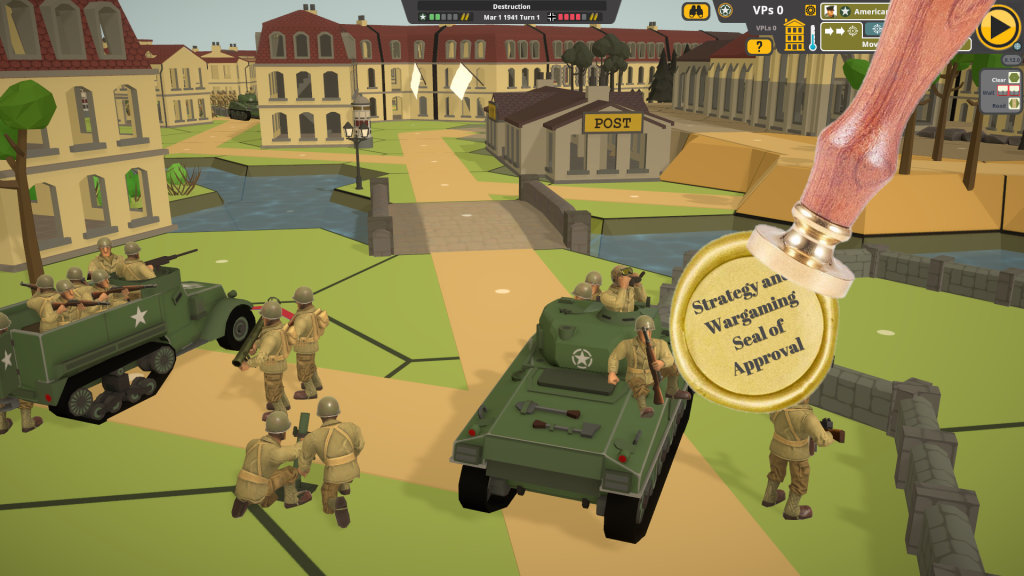







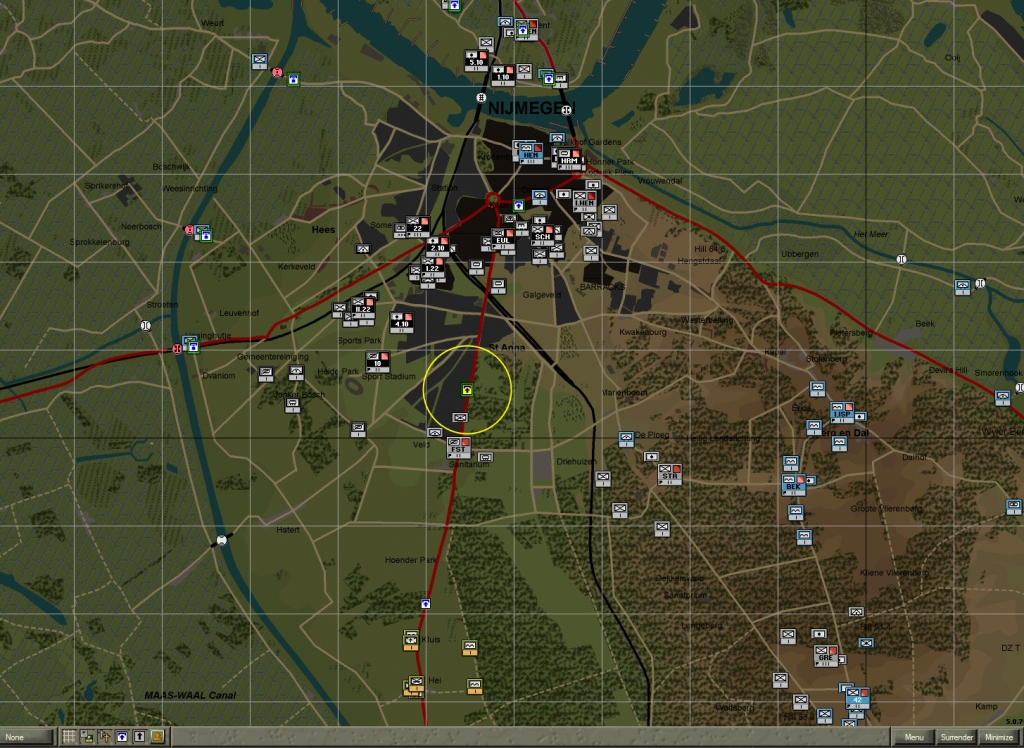
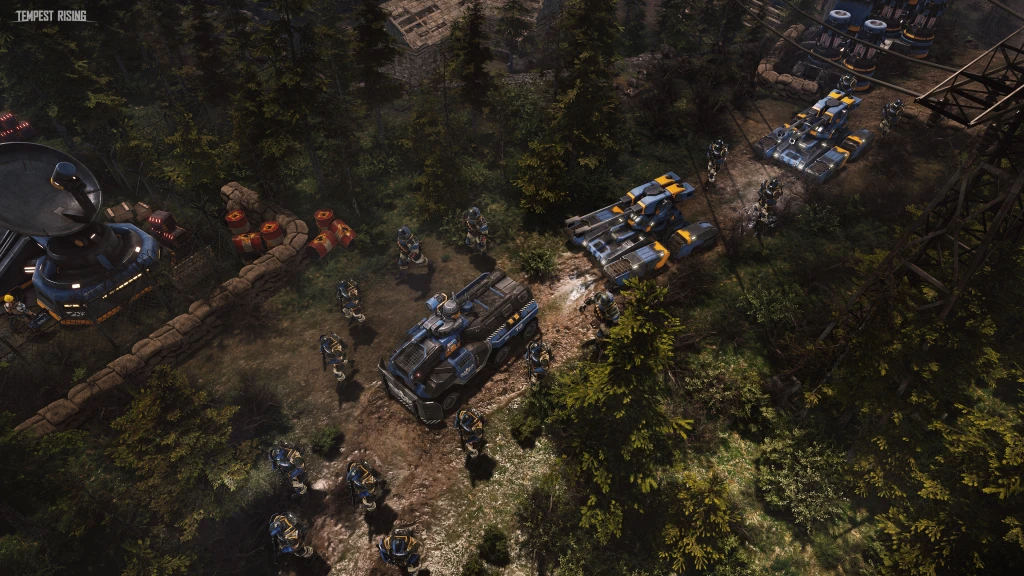
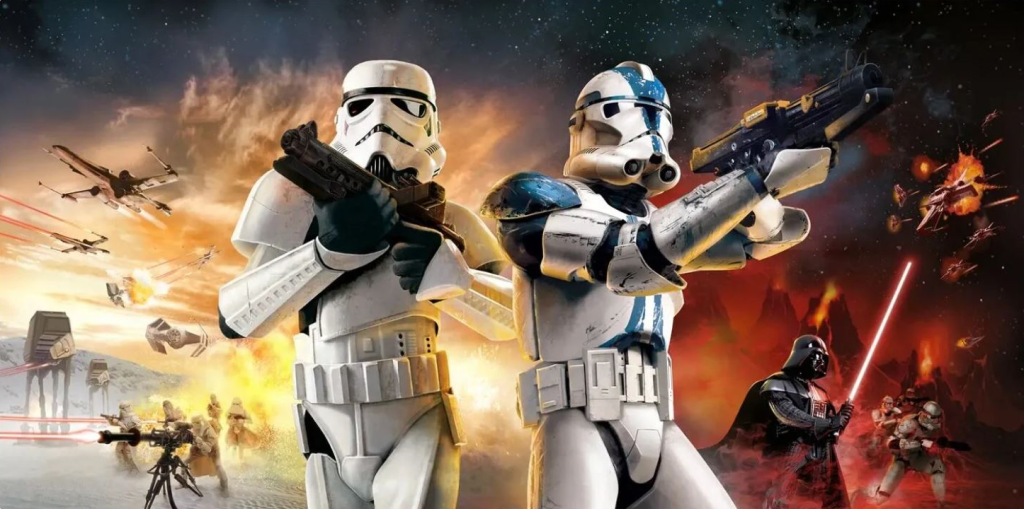
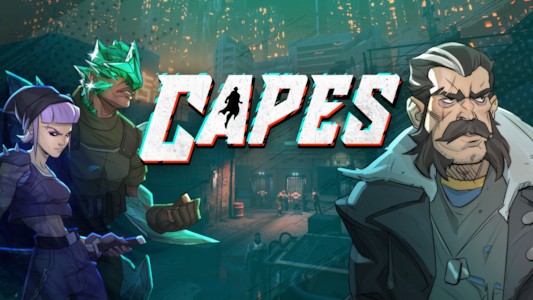
Leave a comment